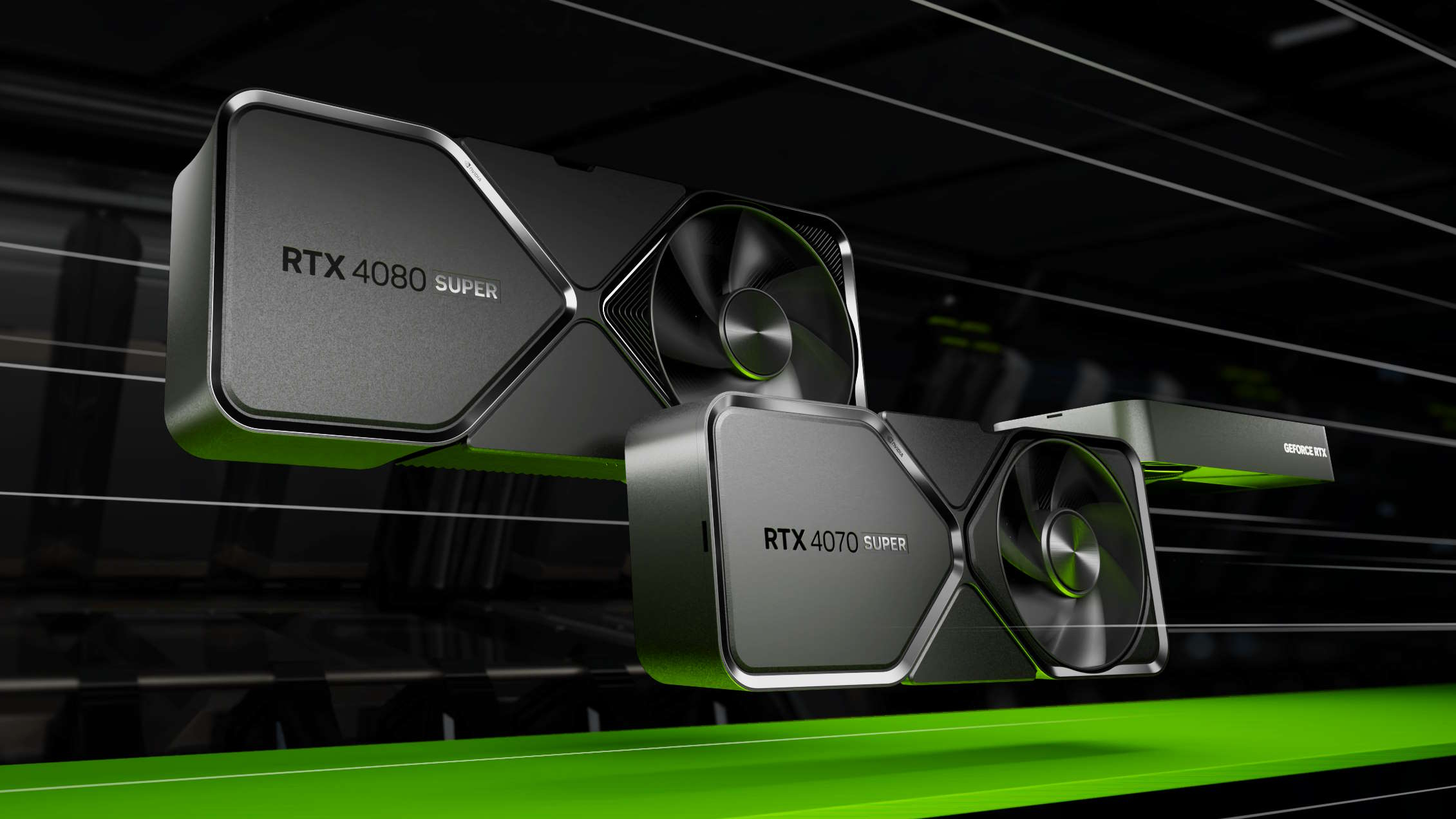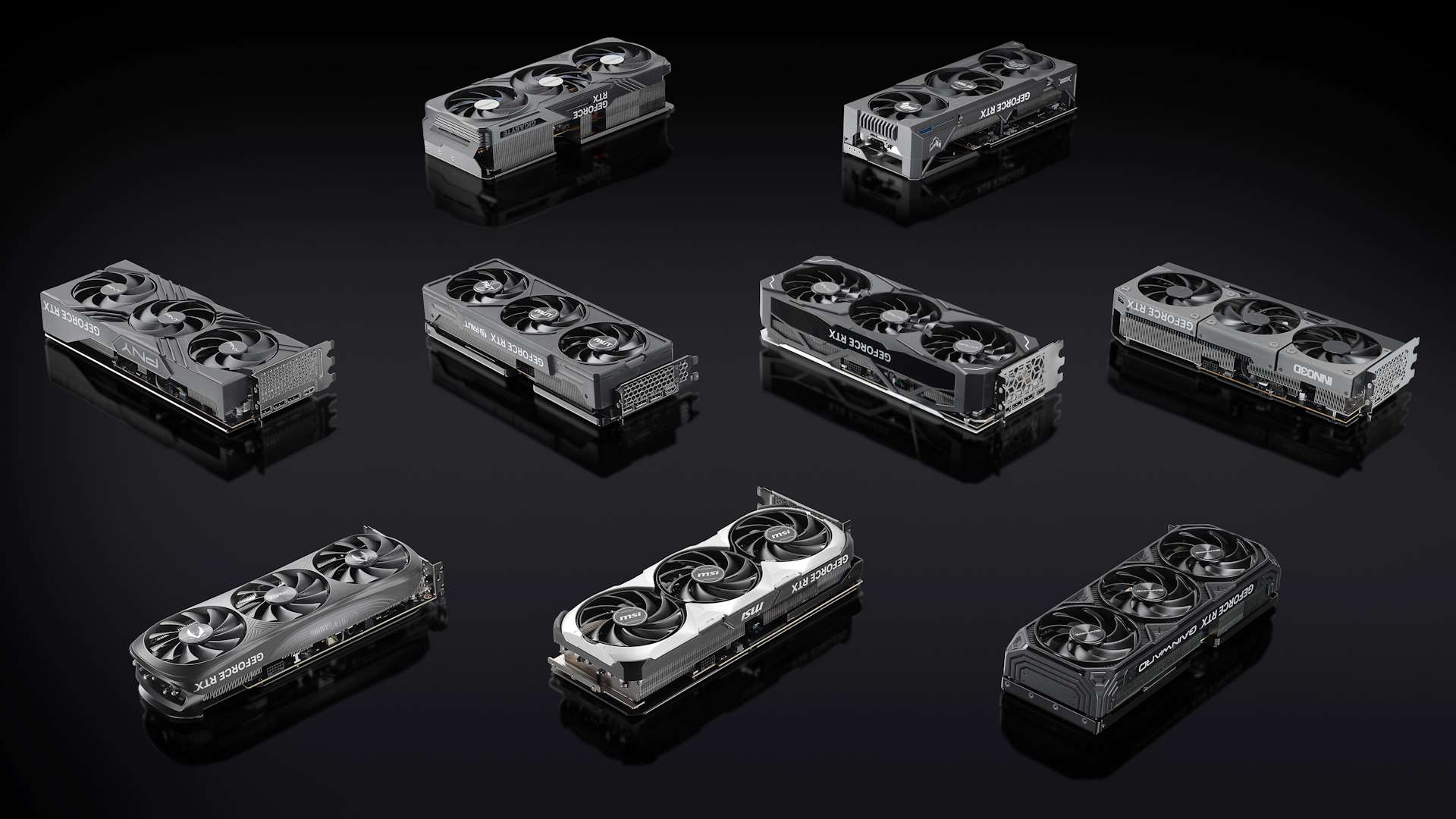The $999 RTX 4080 Super feels like a tacit admission Nvidia over-reached on the original Ada pricing
The $1,200 price tag of the RTX 4080 always seemed too high, and with the Super version's $200 haircut, it feels like Nvidia's copped to it.

They've been announced, we've got a couple of them in-hand and humming away in the test rig as I type, and the new RTX 40-series Super cards will all be available for us to buy by the end of the month. But as much as the Ada refresh is welcome, it's hard not to see at least the RTX 4080 Super as a tacit admission that Nvidia got its pricing very wrong on the original second-tier GeForce GPU.
There's no denying shaving $200 off the original $1,200 price tag of the RTX 4080 is a good look. We're over a year on from its original launch and the mildly updated RTX 4080 Super—with its slightly more powerful AD103 chip and slightly quicker GDDR6X memory—isn't going to deliver much in the way of a performance improvement. So a big price drop is the only way to make the new card feel like a tangible advance.
It has to be said the original RTX 4080 should never have been a $1,200 GPU in the first place. It always felt like far too much money for an RTX xx80 class card; that was always Titan, Ti, or RTX xx90 class cash at most. Having the top two cards in the Ada generation costing well north of $1,000 felt utterly tone deaf in an environment that was struggling out of an economically catastrophic Covid period.
But during that time gamers and GPU enthusiasts had proven over and over again they were willing to pay even higher premiums for the privilege of having their hands on the best graphics silicon you could buy, no matter the brutal scalper or retailer markups they had attached to them. And the RTX 4080's ludicrous price tag felt like a response to this, like an Nvidia determined to make all the money it could while that acceptance of sky-high GPU pricing was almost the norm. Even if before that point it wasn't strictly manufacturer mandated.
In the end, the $1,200 launch price of the RTX 4080 definitely had a huge impact on its sales. You'd have thought so long after it released the RTX 4080 would have a greater footprint in the Steam Hardware Survey than it has. Today it's the least popular of all the RTX 40-series GPUs, with even the RTX 4090 displaying greater representation in Valve's data. Of course, the Steam survey is by no means completely representative in terms of all the GPUs sold across the globe, but it's still quite a good indicator of how things look at a given point in time.
And that RTX 4090 costs considerably more, too, launching at $1,600, though is absolutely a far superior card on the whole. It's got a way bigger GPU, a good chunk more memory, and delivers the sort of generational performance leap you want from a whole new architecture coupled with a new production process.
Even today the RTX 4090 almost feels like the best value Ada graphics card of the entire range, especially when you take into account the hefty price hike the rest of the range took over the previous generation. The RTX 3090 Ti—itself embodying pandemic pricing at $1,999—was an expensive outlier, but the RTX 3090 launched at a very similar $1,500.
The biggest gaming news, reviews and hardware deals
Keep up to date with the most important stories and the best deals, as picked by the PC Gamer team.
Though a lot of that shine has faded since the hefty rise in pricing for the RTX 4090 after the China sanctions started to bite.

So there was no way Nvidia could, in all good conscience, release an RTX 4080 Super with effectively the same gaming performance for the same unrealistic price. And it seems like, with a $200 price cut, it has seen some sense. This $999 tag puts it at around the same price as AMD's top graphics card, the RX 7900 XTX, which was always going to be as low as Nvidia would be willing to go with the top card in the Ada refresh.
Though it will never admit as much; it will never say it got it wrong with the extreme pricing of the RTX 4080, and we'll just have to accept the benevolence of our Nvidian GPU overlords in the relative price cut slapped onto the RTX 4080 Super. There's a chance this was the plan all along: release the original card at an unfeasible price point while people were still prepared to pay ridiculous sums for cards not worth the money, and then drop its price later on. Making hay while the sun shines, so to speak.
Of course, having said all that it would be churlish of me to suggest that even a $999 price tag for the original RTX 4080 would have been too high, especially with the RTX 3080 costing a paltry $699 at launch. But it's hard to get too excited about a second-tier graphics card where a large percentage of third-party cards are going to be priced well above the $1,000 mark, even if the reference GPU does have that $999 MSRP.
Still, the Founders Edition is where it's at anyways. Just look at the lovely all-black shroud and try and forget how much money you might have spent on one. After all, you can still feel super smug about the few people who spent well over the odds on the weaker RTX 4080 in the past 12 months, eh?

Dave has been gaming since the days of Zaxxon and Lady Bug on the Colecovision, and code books for the Commodore Vic 20 (Death Race 2000!). He built his first gaming PC at the tender age of 16, and finally finished bug-fixing the Cyrix-based system around a year later. When he dropped it out of the window. He first started writing for Official PlayStation Magazine and Xbox World many decades ago, then moved onto PC Format full-time, then PC Gamer, TechRadar, and T3 among others. Now he's back, writing about the nightmarish graphics card market, CPUs with more cores than sense, gaming laptops hotter than the sun, and SSDs more capacious than a Cybertruck.

